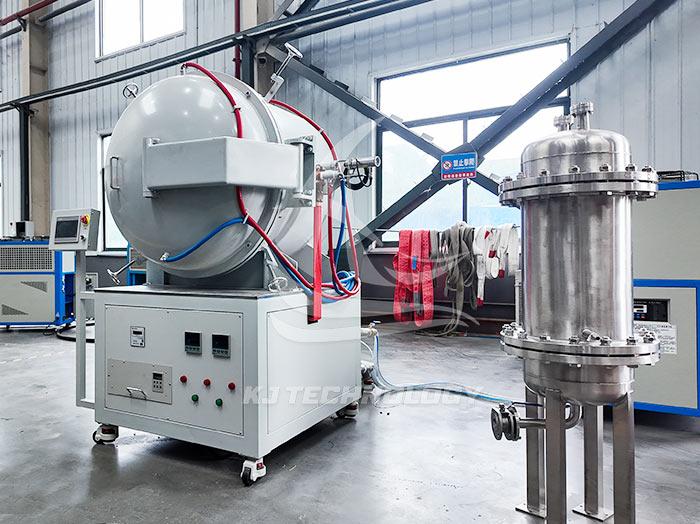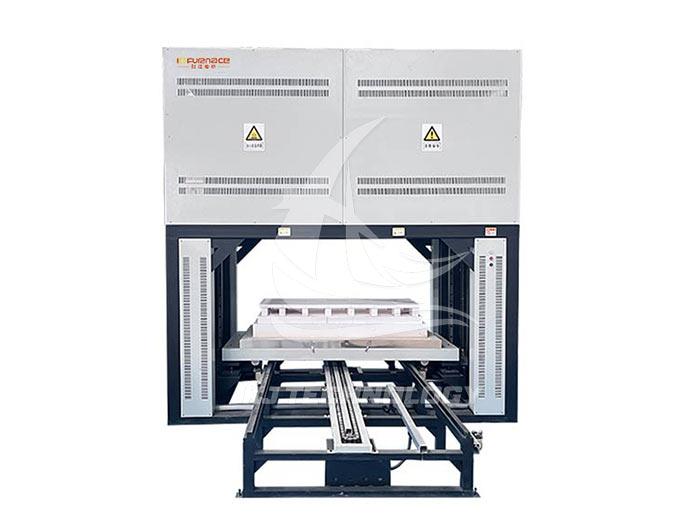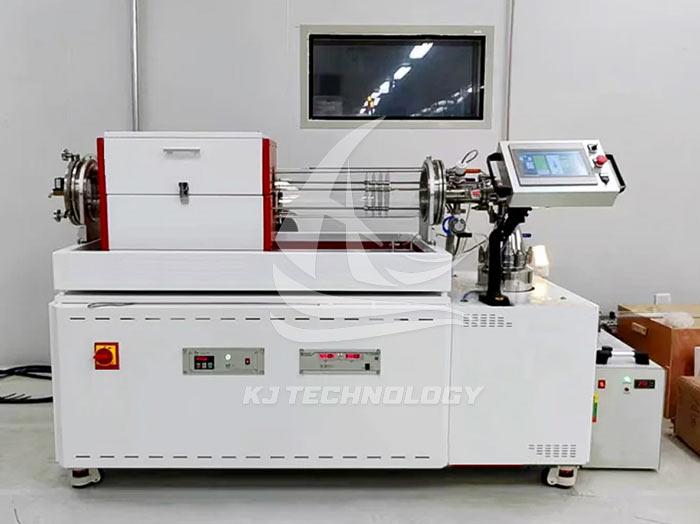Precautions for using high vacuum furnace
 07-25-2025 Author: KJ technology
07-25-2025 Author: KJ technology
As a precision equipment, the use of high vacuum furnaces involves complex conditions such as high temperature, high pressure, and vacuum environment. Improper operation may lead to equipment damage, experimental failure, and even safety accidents. The following are key points to pay special attention to when using a high vacuum furnace:
1. Preparation before operation
Equipment inspection
Vacuum system: Check the oil level and quality of the vacuum pump to ensure no leaks; Test the accuracy of instruments such as vacuum gauges and pressure sensors.
Heating system: Confirm that the heating elements (such as tungsten wires and graphite tubes) are not broken or aged, and check whether the temperature controller parameter settings are correct.
Cooling system: Check whether the water-cooled pipes are unobstructed, whether the cooling water flow and pressure meet the requirements, and avoid equipment damage caused by insufficient cooling.
Sealing: Check whether the sealing rings of the furnace door, observation window, flange interface and other parts are intact, ensuring no scratches or aging, and replace them if necessary.
Environmental requirements
Keep the area around the furnace clean and prevent impurities such as dust and oil from entering the vacuum system.
Ensure good grounding of the equipment to prevent safety accidents caused by static electricity or leakage.
sample preparation
The sample needs to be thoroughly cleaned to remove surface oil stains, moisture, and impurities, and to avoid contaminating the vacuum environment.
The sample size should match the furnace to avoid jamming caused by excessive size or affecting heating uniformity due to insufficient size.
Samples containing volatile components (such as moisture and organic matter) need to be pre dried to prevent the release of gases at high temperatures that can damage the vacuum.
2. Operation process specification
Vacuum extraction process
Staged pumping: First, start the mechanical pump (such as a rotary vane pump) to pump to a rough vacuum (about 1-10 Pa), then switch to a turbo molecular pump or diffusion pump to pump to a high vacuum (10⁻³-10⁻⁴Pa).
Avoid rapid vacuuming: Sudden vacuuming may cause deformation of the sample or internal components of the furnace, and the pressure should be slowly reduced.
Monitoring vacuum degree: Real time observation of pressure changes through a vacuum gauge. If the vacuum degree drops too quickly or cannot reach the target value, the machine should be stopped immediately to check the leakage point.
Heating control
Segmented heating: Set the heating curve according to the material characteristics to avoid sudden temperature rise causing sample cracking or excessive thermal stress in the furnace.
Uniform heating: Ensure that the sample is placed in the center of the furnace to avoid local overheating. For large samples, rotating or stirring devices can be used to improve temperature uniformity.
Temperature calibration: Regularly calibrate the temperature controller using standard thermocouples or infrared thermometers to ensure accurate temperature display.
Process parameter monitoring
Record key parameters such as vacuum degree, temperature, and time to ensure process repeatability.
If protective gases (such as argon or nitrogen) need to be introduced, the flow rate and pressure must be strictly controlled to avoid excessive gas flow that can damage the vacuum or cause sample oxidation.
3. Safety protection measures
Personal Protection
Operators should wear protective goggles, insulated gloves, and dust masks to avoid high temperature burns or inhaling harmful gases.
It is prohibited to directly observe high-temperature components or open the furnace door during the operation of the furnace body.
Equipment safety
Set up alarm devices for overheating, overpressure, water leakage, etc., and regularly test their sensitivity.
Install fire extinguishers around the furnace and ensure that the emergency stop button is easily accessible.
Avoid touching rotating parts (such as turbine molecular pump blades) during vacuum pump operation to prevent mechanical injury.
Emergency Management
Vacuum leakage: Immediately turn off the vacuum pump, release the pressure inside the furnace, and check the sealing ring or flange interface.
Heating fault: Cut off the power and check the heating element or temperature controller after the furnace body cools down.
Cooling system malfunction: Immediately shut down and turn off the heating to prevent overheating and damage to the furnace body.
4. Maintenance and upkeep
Routine maintenance
Clean the furnace after each use, remove residues, and prevent corrosion or contamination of subsequent samples.
Check the oil level of the vacuum pump, regularly replace the oil and clean the oil mist filter.
Lubricate moving parts such as furnace door hinges and sliding rails to ensure smooth opening and closing.
Regular maintenance
Check the resistance value of the heating element every quarter, and replace it if the deviation exceeds 10%.
Perform leak testing on the vacuum system annually (such as helium mass spectrometer leak detector) to repair the leak points.
Verify the accuracy of instruments such as vacuum gauges and pressure sensors, and if necessary, send them to a professional organization for calibration.
Long term discontinuation
Evacuate the residual gas in the furnace, maintain a vacuum state or fill it with dry nitrogen for protection.
Shut down the cooling water system to prevent pipeline freezing and cracking (special attention should be paid in winter).
Store in a dry and ventilated environment to avoid short circuits in electrical components caused by moisture.








